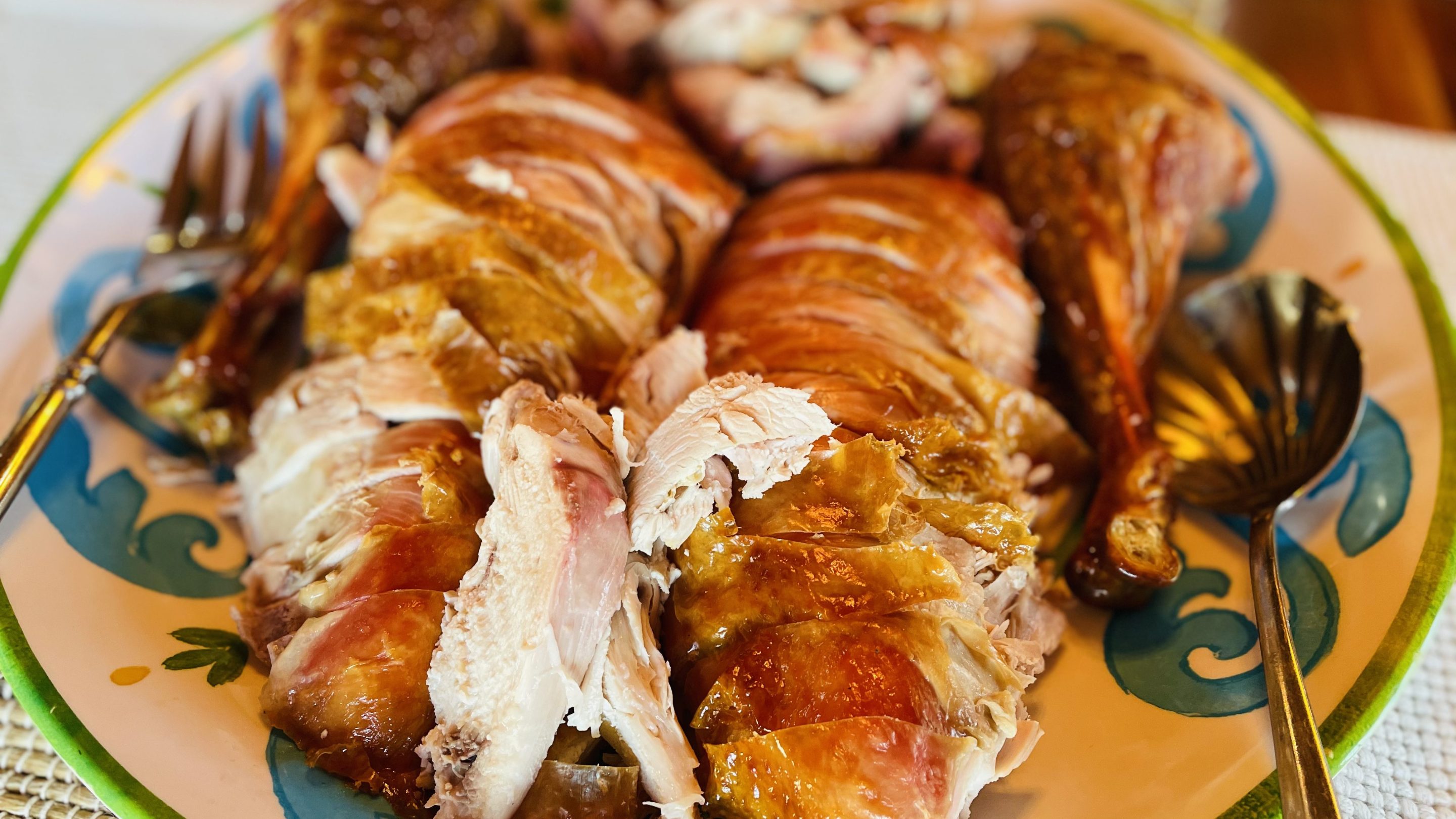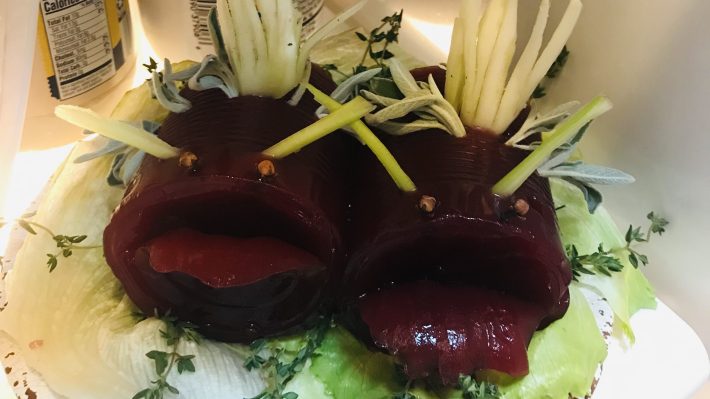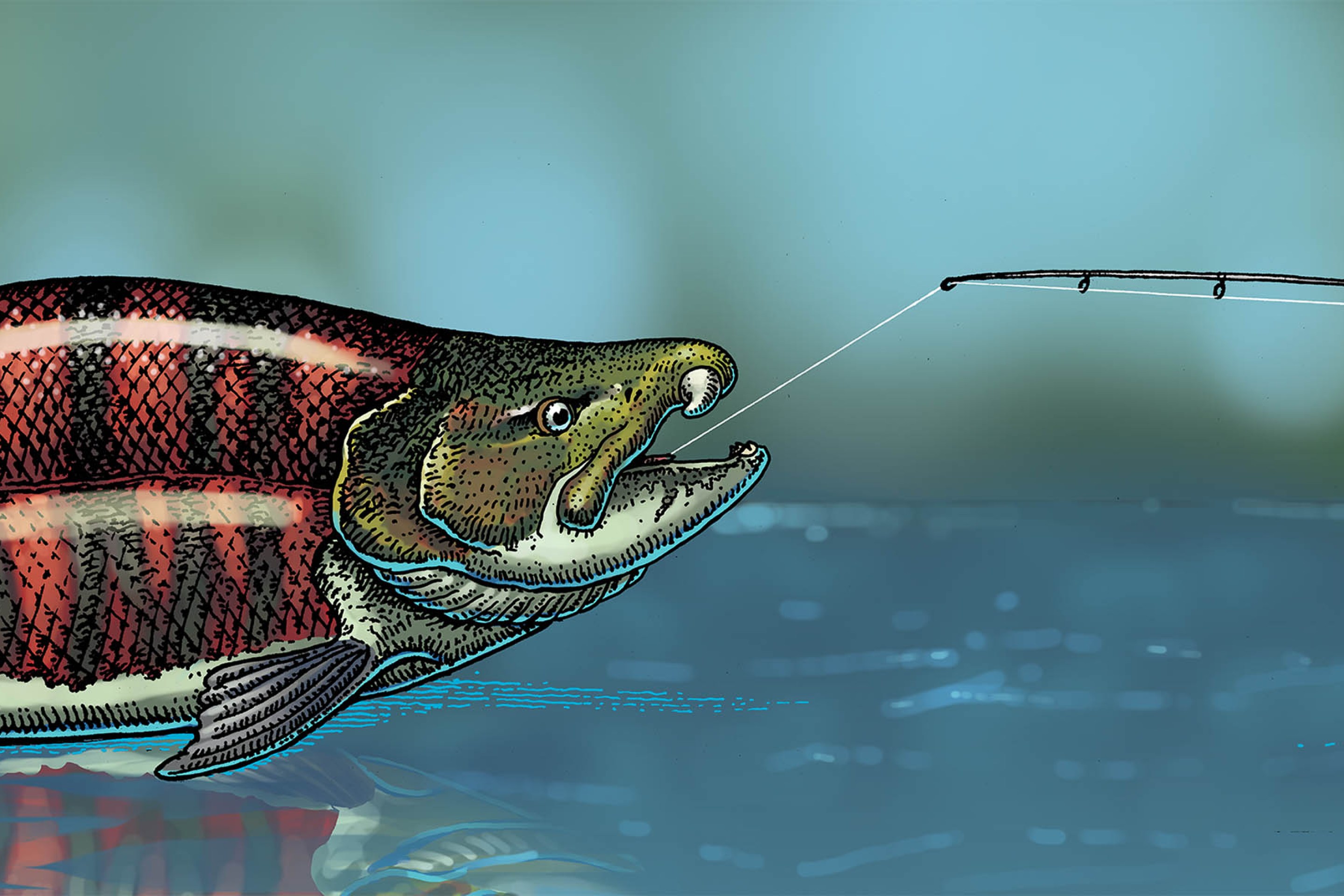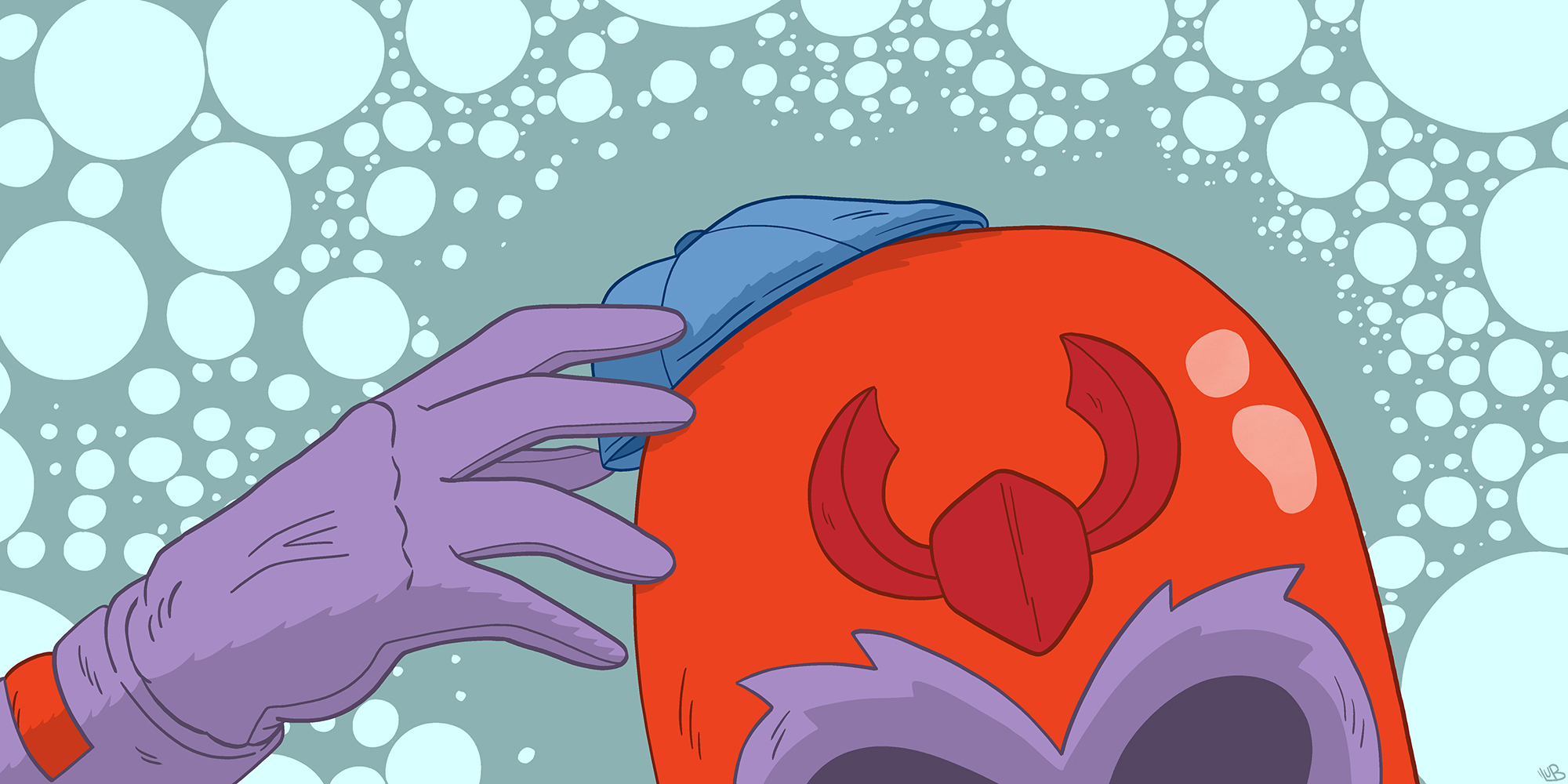What I Cooked For Thanksgiving This Year
10:00 AM EST on November 28, 2020

I'd held out hope for Thanksgiving. I hadn't quite known I was doing it. In fact I'd already long since exhausted everyone I know with my confident predictions that no part of American life would—or could be allowed to—return to any semblance of its pre-pandemic patterns absolutely any sooner than mid-2021, if ever. But then it came time to acknowledge, out loud, a few weeks ago, that there would be no big family Thanksgiving this year, and that's how I found out that I'd been hoping, until then, that there might be.
My natural response to this, as to basically every bad or stressful thing, was to freeze in place, as if this might cause it to pass me by unnoticed. (It did not, because that is not how the passage of time works.) The point here is: That's why this blog is running today, as a recap of what I cooked for Thanksgiving, rather than four days ago as a service blog advising you, the reader, on what you could cook for Thanksgiving. Maybe the silver lining here is that running it two days after Thanksgiving gives you, uh, near-maximum lead time to absorb its dubious lessons before next November.
Candied yams
This is a good dish to let your kids help with and/or make on their own, as it is (or certainly can get away with being) an incredibly simple production. While the turkey (more on this in a moment) roasted, my elder son dumped the strained contents of two big 40-ounce cans of Bruce's Yams into a disposable foil casserole tray, kinda tossed them around with what looked to him like sufficient quantities of dark brown sugar and crushed walnuts, then topped them with a frankly obscene quantity of small marshmallows. When the turkey came out of the oven for its rest under a tinfoil tent, the yams took its place (along with a few other things we will get to in a second). A little while later, when the layer of marshmallows looked browned and melty and good, the yams came out. They were intensely sweet and delicious.
Reader, is this How To Make Candied Yams? Probably not! Probably the, uh, right way to do it involves other ingredients and is not just canned yams with what are essentially just two forms of sugar. My purpose here is not to tell you the best possible way to make candied yams. My purpose here is to tell you that if the best you can do is to strain two big cans of Bruce's Yams and dump them in a casserole tray with some brown sugar and crushed nuts and cover it all with a tarp of marshmallows, that will be fine. The yams were fine. Nobody worth feeding would have had anything bad to say about them.
Green bean casserole
I'm a sucker for this stuff! Ordinarily the green bean casserole is my big sister's bailiwick, but she wasn't here this year. I'd never actually cooked it before, and on some fundamental level just kind of didn't want to actually learn how. It would be like replacing my big sister instead of just missing her, and I prefer the latter. So I strained two 40-ounce cans of green beans and dumped them into a disposable foil casserole dish; then I dumped like four small cans' worth of cream of mushroom soup and two large cans of those crunchy fried onions on there; then I tossed all this stuff around with a pair of wooden spoons until it was all combined; then I put another can of the crunchy onions across the top. It was all very Upper-Midwestern. I may have even said a nasally "Oh yah" along the way.
When the turkey came out of the oven, I put this in there next to the yams. After a few minutes the layer of crunchy onions on top had browned a bit; I covered the whole deal with aluminum foil and put it back in there so that the casserole could continue getting warmer throughout without the top layer burning. It was fine! It was not as good as when my big sister makes it, but that was kind of the idea, so I regard this as a success.
Mashed potatoes
There is nothing to this. Peel and boil some russet potatoes until a fork goes into the middle of each of them with very little resistance. Then strain them and mash them with some butter while they're still hot; then fold in some milk to render them creamy. Add salt and pepper to taste. I like them with a little bit of chunkiness.
Gravy
I made a stock of turkey necks and aromatics and carrots and celery and thyme and bay leaf. I chopped the turkey's giblets small and cooked them in some butter in a little saucepan, then whisked in half a cup of flour, then whisked in stock in ladlefuls until I had probably six cups of gravy. Then I added salt and pepper. It was fine. A fine gravy.
Stuffing or dressing or whatever
I did not stuff the turkey this year. In years past I have been a Stuff The Turkey Even Though That's Considered Bad kind of guy, because in general I have not cared all that much about Thanksgiving turkey and have regarded it mostly as a large vessel whose highest calling is as a source of moisture and flavor for stuffing. In years to come I may well go back to stuffing the turkey. It's none of your damn business!
But this year I decided not to stuff the turkey. Or anyway I stuffed the turkey with other things, for the purpose of flavoring the turkey. We'll get to that in a minute. But as concerned the bready substance that I regard as the most important Thanksgiving foodstuff, it did not go into the turkey this year.
For the past few years my local supermarket has sold big bags of plain cubed bread made out of stale loaves of the very good bread they bake right there in the store, and I've used those for stuffing. This year they didn't have any, so I bought two loaves of freshly baked Italian bread, cut them into little cubes at home, and then, working in batches a couple of days before Thanksgiving, ran all the cubes through a 250-degree oven to get them dry and crunchy so they would be maximally absorbent.
Then, on Thanksgiving morning, I hauled out my big Dutch oven and cooked a pound of breakfast sausage, a big diced yellow onion, and what ended up being probably eight or 10 stalks of celery chopped very small, in the bottom of it until the sausage had cooked through and its fat had rendered and the onion and celery had softened in that fat. Then I tossed this with the cubed bread, a double-fistful of crushed walnuts I'd toasted in a hot stainless steel pan, and a fistful each of chopped sage and chopped parsley. Then I hosed this all down with more of that stock from the gravy portion of this blog, so that the bread was as wet and dense as if it had spent all day inside the body cavity of a roasting turkey. Then I dumped all of this into, you guessed it, yet another disposable foil casserole tray, which joined its brothers in the oven when the turkey came out. You could have convinced a blind taste-tester that this stuff had cooked inside of a bird, except that it was even better because the exposure to the hot air inside the oven had turned it crispy here and there. It's great and there's a ton of it and I'll be eating it for a week. Hell yeah.
The turkey
Picture a trio of mechanical dials, as on the control panel for a piece of 20th-century machinery, like a power plant or a nuclear reactor or whatever. One of them is "Output" and another is "Input" and the third is the number "1." The first number, divided by the second number, will always equal the third number. You try to increase the "Output" value, and then the "Input" value also increases by the exact same number, and the "1" remains exactly the same. This is an ambiguous type of scene; I, the artist, will not resolve it for you. What does the "1" mean? Who can know? You can superimpose your own meaning onto it, like for example while you contemplate the work involved in spatchcocking, or what utility an ordinary person with an ordinary life might hope to get out of a "baking steel" on the other 364 days of the year.
I had a 17-pound organic turkey. On Wednesday, I salted it extremely generously, inside and out, and set it in a V-shaped wire rack on a cookie sheet in the fridge so that its skin could dry out. Early on Thursday morning, when I got up to feed the dogs, I took the turkey out of the fridge, wiped it off haphazardly with a wad of paper towels, and set it on the counter to come up to room temperature. A few hours later I crammed its various cavities full of chunks of apple and onion, plus a big thicket of thyme sprigs and some sage leaves, and socked it into a 500-degree oven for half an hour so that its skin could get a head start on getting brown and crispy. Then I inserted a probe thermometer into the thickest part of the turkey's breast, set the probe alarm to go off at 159 degrees, and put the turkey back into the oven, now at 350 degrees.
Before I tell you what happened next, I want you to know that this is a perfectly fine way to cook a turkey. I've done it before and the turkey came out great; the breast, cooked to what are ultimately higher-than-ideal temperatures for breast meat, was nevertheless juicy and delicious. In fact, I've even cooked a turkey stuffed with bread stuffing this way, in the past, and had it come out delightful. You cook the turkey to 159 degrees Fahrenheit, then you take it out, cover it with aluminum foil, and let it coast the rest of the way to 165 degrees over the ensuing hour or so, ensuring that the turkey's dark meat is cooked to a safe temperature. This is a fine way to cook a turkey, and if you cook a turkey this way, it will be fine.
Which leads me to my next point, which is that in general, the single most useful piece of advice a food blogger can give you, vis-a-vis cooking turkeys or large meatloaves or rib roasts, is "purchase a reliable probe thermometer, familiarize yourself with both its operations and the target temperature of whatever you're cooking, and ensure that it has fresh batteries whenever you use it." The challenge, for the food blogger, is that this makes wide swathes of food blogging redundant at best and insulting at worst; thus it's necessary to invent reasons to advise readers away from the probe thermometer. I will not shame my fellow food bloggers by linking to any examples of this; it is enough for me to tell you that they exist. No, a probe thermometer will not let all the juices leak out of your food. No, a probe thermometer, properly used, will not deceive you as to the temperature of your turkey or meatloaf or rib roast. A probe thermometer will simply let you know what is going on inside of your big hunk of meat without requiring you to open the oven a bunch of times or rely on flatly unreliable "X temperature for Y minutes per pound" formulas that simply cannot account for the fact that your oven almost certainly is not cooking your food at exactly the temperature to which you preheated it. Probe thermometers are good. I recommend getting one.
Having said that: The frickin' damn batteries on my probe thermometer died, Thursday, at some point in between when I checked the turkey and saw that it had reached 150 degrees, and some time later when I finished a game of FIFA and the thought occurred to me that the probe alarm should have sounded quite some time ago at the rate at which the turkey had been cooking. At which point I checked the turkey's internal temperature with my trusty instant-read thermometer, discovered that I'd cooked the fucker to fucking 176 degrees, and for several quick moments earnestly wished I could simply twist my own head off and throw it into the woods.
This is not the probe thermometer's fault. This is my fault. I bought the probe thermometer whole entire years ago and never, before Thursday, thought seriously about the possibility that there might be particularly bad times for its aging batteries to die. My advice stands!
Anyway the turkey was still fine. Dry! But fine. Everything is fine when it is swimming in gravy. That is why, when a thing is fine and good and goes down easy and needn't be worried about, people say that it is gravy.
Oh right, and then there was:
Cranberry substance
My wife, a very brilliant artist, was in charge of this. She did the following:

They're anglerfish! You can keep your damn "opinion" to yourself!
If you liked this blog, please share it! Your referrals help Defector reach new readers, and those new readers always get a few free blogs before encountering our paywall.
Assignment Editor
Read More:
Stay in touch
Sign up for our free newsletter




